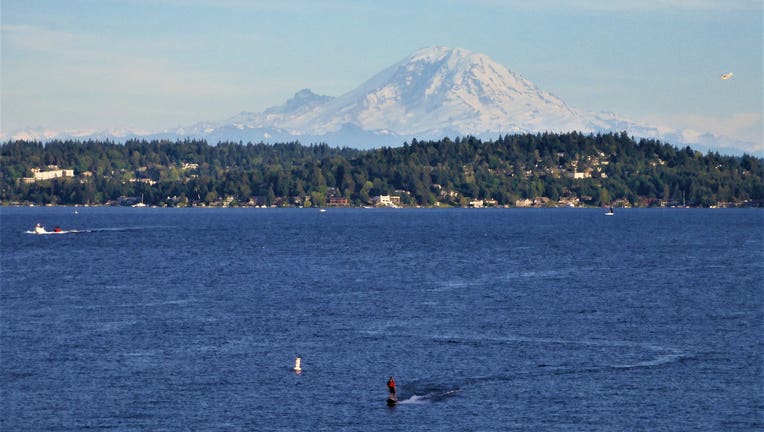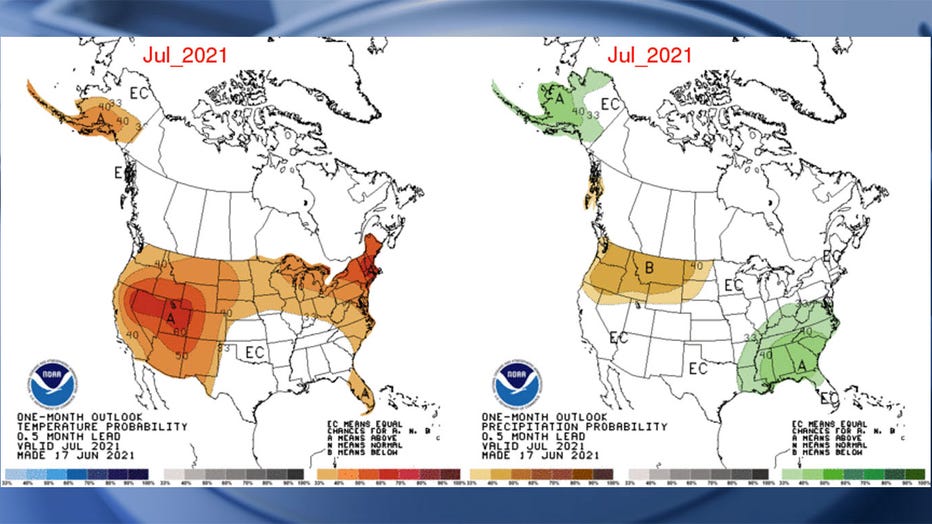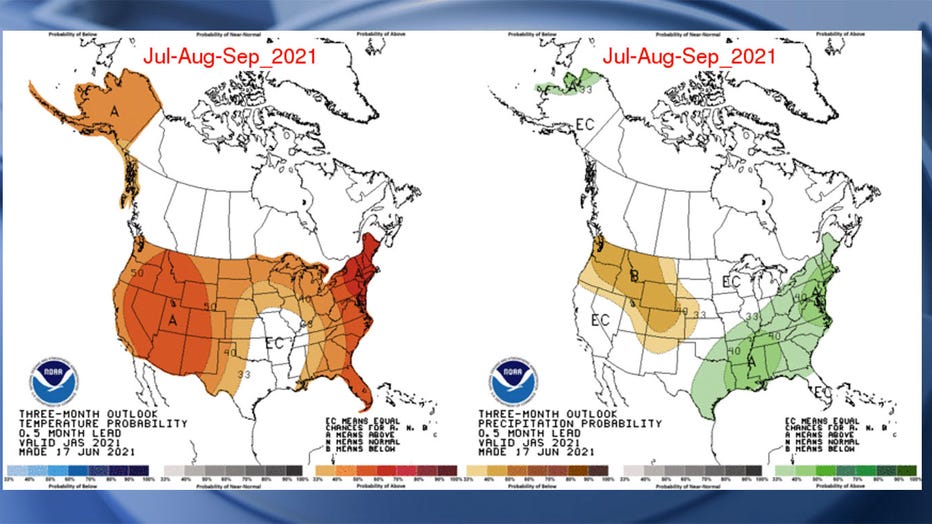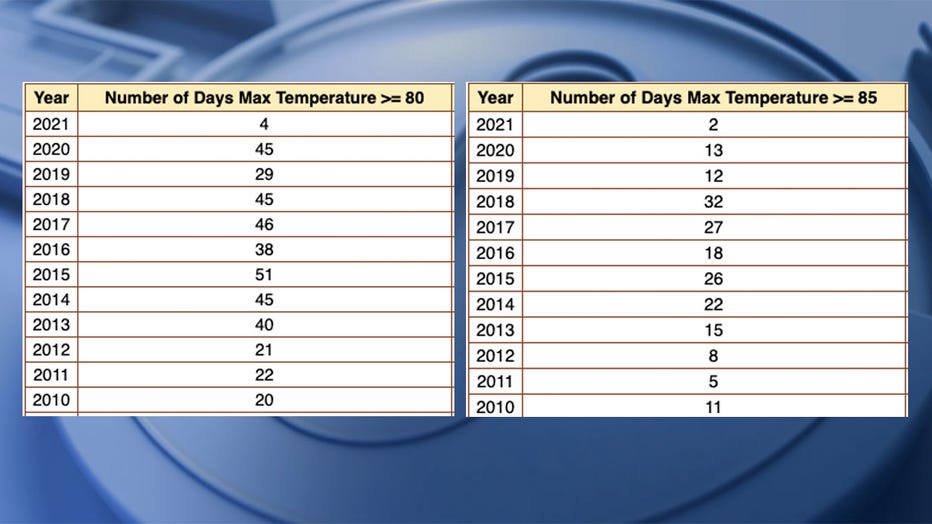Another hot and dry summer predicted for the Pacific Northwest

SEATTLE - After a relatively cool May and start to June, long-range forecasters think this summer will turn things around and end up hot and dry in the Pacific Northwest.
Again?
NOAA issued its new 30 day/July and 90 day/summer forecast Thursday and it paints a familiar theme around here. For July, NOAA is giving slightly higher odds of it ending up at least a half degree warmer than normal by monthly average with a bit more confidence that July will end up drier than normal.

Courtesy: NOAA
For their summer forecast that includes July, August and September, NOAA has high confidence average temperatures will again be at least a half degree above normal, with again a moderately-high confidence of drier-than-normal conditions.

Courtesy: NOAA
Those averages are based off of the newly updated 30-year temperature and precipitation normals that were published in April, which already had nudged the base comparison average high temperatures higher.
It would continue a streak of hotter summers in Western Washington. Seattle has had well-above normal counts for warm days (80+) and hot days (85+) for eight consecutive years now.

Number of times Seattle has reached at least 80 and 85 degrees the past several summers. (Normals: 27 for 80+ and 10 for 85+. Data courtesy: NOAA)
(Normal summers see 27 days at or above 80 degrees with about 10 days at 85 degrees or warmer.)
The heavy rains earlier this month combined with a healthy winter snowpack has helped keep water supplies in good shape and fire danger lower in the interim, but an extended hot and dry stretch can quickly ratchet up the fire danger.
And right on cue, rainfall is out of the picture for the next several days across much of the West as a large ridge of high pressure remains in control. Highs around the Seattle area are expected to climb into the mid 80s early next week before cooling off a bit later in the week.
For those who favor the colder weather patterns, your time could be coming this winter as there is still a moderate chance that cooling La Nina conditions will redevelop in the Pacific Ocean which brings hope of a cooler, wetter winter again.
Q13 WEATHER RESOURCES:
DOWNLOAD: Q13 Weather and News Apps
WATCH: Forecast and Radar
READ: Closures and Delays
CHECK: Latest Weather Alerts and Live Traffic Map
INTERACT: Submit your Weather Photo
FOLLOW: Lisa Villegas, MJ McDermott, Tim Joyce, Erin Mayovsky, Grace Lim and Scott Sistek

